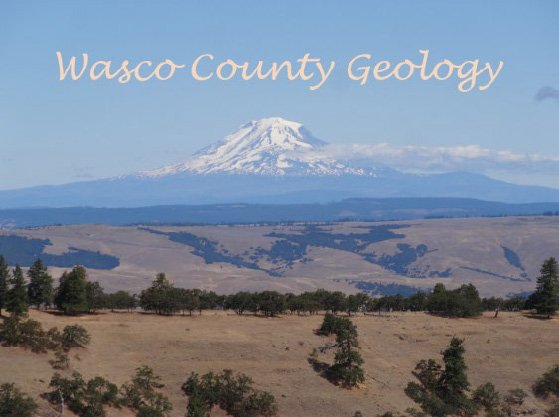The Great Eclipse Camp-Out
/The best group picture of the weekend was taken at Lost Lake. Participants left to right are Jamie Meinecke, Taka Matsuda, Bailey Faber, Ken Severin, Dawn Juliano, Clay Kelleher, Cecily Cedilote, Barbara Fischer Smoody, Steve Haar, Charles Montross, Mark Anderson, Julia Lanning, Bill Stein, Susan Cole, Carol Hasenberg with her dogs Lucy and Trinity, Serena Skaates, Rik Smoody, Henry Rosales, Larry Jordan.
by Carol Hasenberg
Twenty four GSOC members and their guests made it to the camp-out in Mill City, Oregon, hosted by GSOC member Dennis Chamberlin and led by GSOC President Rik Smoody. The purpose of the field trip was to get a bunch of science-minded individuals together to observe one of the most accessible eclipses of this century, and enjoy a bit of geology and camping.
GSOC First Lady Barbara Smoody demos one use of the spigot setup.
Campers started to arrive at the Chamberlin residence along the Santiam River in Mill City on Friday evening. The site was perfect for a campout. The host had rigged up a really nifty spigot system for the garden hose so the campers had access to water. GSOC provided the porta-potties.
Saturday traffic was not expected to be unreasonable, so President Smoody had planned a fun round trip tour to view some of the local geology in the Santiam Pass to McKenzie Pass area. Unfortunately the local fires dictated a shortened version of this, but the stops were still very interesting and did contain the prerequisite drive on at least one gravel road as required in the GSOC bylaws (just kidding!). The stops were (in order): Detroit Dam, Lost Lake, Metolius Spring, Little Nash Crater, Clear Lake, and the Sahalie and Koosah Falls trail.
At Detroit Dam a couple of members opened some rock samples, and we were trying to decide whether the small white crystals in the surrounding grey matrix indicated whether we had extrusive or intrusive bedrock here. So, I looked up the site on the DOGAMI online interactive geology map and sure enough it says intrusive.
GSOC member Charlie Montross observes water draining from Lost Lake. Note the hazy background created by the forest fires in the Mt. Jefferson area.
Next the caravan drove to Lost Lake and we were able to view one of the lava tube holes that drain the lake in action. The rangers we encountered there told us that the water in the lake travels for several years through underground lava tubes and fissures to end up in Fish Lake, then Clear Lake on the McKenzie Pass Highway. This was a very fun sidetrip and well worth the viewing.
Then the GSOC group traveled across the pass to the base of Black Butte, where the Metolius River springs forth from the ground.
The GSOC caravan next visited Little Nash Crater a cinder cone that is currently being mined by ODOT for views of a weird moonscape and a cool view of the US 20/OR 22 intersection and the highway department maintenance depot. The forest fire haze ensured that we could see little beyond the immediate area.
Coming down from the heights, the group proceeded south down Oregon Highway 126 to Clear Lake. This beautiful spot collects the water we viewed at Lost Lake. Going farther south, the group then hiked alongside the McKenzie River to view Sahalie and Koosah Falls. The water was falling strongly through those features.
On Sunday the GSOC group did not have a formal activity, but with such great surroundings at least two hiking groups formed to explore nearby trails. Others found peace and rest along the Santiam River at the campsite.
GSOC members Charlie, Julia, and Mark perform a little hocus pocus in the taking of this panorama shot at Little Nash Crater.
Then the big day arrived, Monday August 21. The eclipse was due to start around 9:00 am, with totality at 10:17. Prior to this we assembled and tested our solar protective viewers, cameras, and other equipment. During the partial phase we observed the changes we saw and felt, and were expressed in nature and manmade experiments. For example Clay discovered that a colander makes a pretty good camera obscura for inverting the image of the partially eclipsed sun.
GSOCers view the partial phase of the eclipse through glasses.
The colander camera obscura.
Dazzling photo of the August 21, 2017 total solar eclipse by GSOC field trip participant and member Charles Montross.
For many of us this was the first total solar eclipse that we had witnessed, and the sight of this one did not disappoint; it was jaw-dropping. In addition to the corona, one could view solar flares along the disc with the naked eye. It was two minutes that passed by amazingly swiftly.
Another fine shot of the eclipse by Charles Montross.
Pass by it did, though, and in the aftermath we were faced with the tasks of clearing camp and driving home through the traffic jam I have decided to dub the Post-Eclipse Apocalypse. But eventually we were home safe and sound.

























































